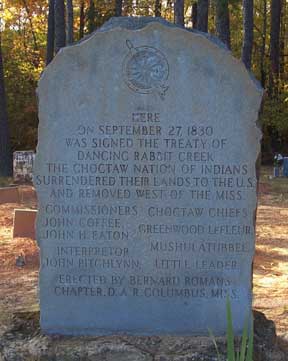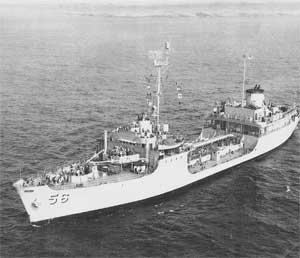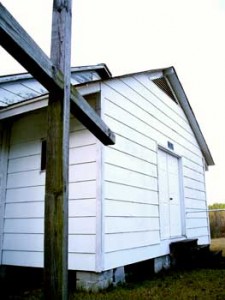History
Formation of Noxubee County: Treaty of Dancing Rabbit Creek
Noxubee County was one of twenty-six counties in our State that was carved from the last great Indian cession east of the Mississippi River. On September 27, 1830, the United States entered into a treaty with the Choctaws in the forks of the Dancing Rabbit Creek which lay in the southwestern portion of what came to be Noxubee County. About 6,000 Choctaws and 500 whites met at the Choctaw Council Grounds and finally agreed on the terms of the Dancing Rabbit Creek Treaty. In December 1833 Noxubee was authorized by the State Legislature.
Because of its central location within the county, Macon was selected as the county seat. Five members of the Board of Police (presently called Board of Supervisors) were elected on February 17, 1834. The first land sales in the county began in 1834 and land sold for about $1.75 per acre. Macon was named for Nathaniel Macon, a statesman of North Carolina.
The vast majority of the early settlers came from the Carolinas, Georgia, and Alabama. They were farmers looking for land on which to rear their families. Few were wealthy and less than 46% were slave owners. They were generally yeoman farmers who lived in log cabins with scant furnishings. The first courthouse was a log building.
In addition to providing shelter for their families and animals, the citizens next turned to building churches and schools. By 1840 there were already organized places of worship and schools as well as a hotel.
The Noxubee River was the immediate route to the outside world and several roads were established by the time of settlement. One of these was the Jackson Military Road which runs through the county and was built by General Jackson’s men on their way to New Orleans in the War of 1812. The river held steamboat traffic during seasons when the water was deep enough.
Population Explosion: 1850’s
The 1850’s witnessed a massive explosion in population, wealth, and growth. The population increased from 10,000 in 1850 to 16,299 in 1860. Homes, schools, churches, and businesses were now being built of wood since lumber was being brought up from Mobile via the Tombigbee River which borders Noxubee on the east. The biggest advancement came with the Mobile and Ohio Railroad which came through the county in the mid-1850’s. With the railroad, Brooksville and Shuqualak developed in the northern and southern districts.
Cotton was “king” (50,096 ginned bales in 1860) but corn was also an important crop. Noxubee led the State in its production with 1,286,085 bushels in 1860. Cotton could be sold, but corn fed the people and livestock.
Noxubee was noted for its outstanding early education with the Gaithright School for Girls and Gaithright School for Boys at Summerville (Gholson). The Calhoun Institute was built by W.R. Poindexter as a boarding school for young ladies. This building was said to be the most architecturally significant building in the State when it was built.
It was also during these years of growth that the Odd Fellows Cemetery purchased 10 acres of land for a city cemetery. It has been used continually since 1854 when the first person was laid to rest there.
War and Poverty: 1860’s
The decade of the 1850’s brought peace and prosperity, but then came the 1860’s with war and poverty. Mississippi was the second Southern state to secede (January 1861) when Lincoln was elected. Noxubee raised seven companies for the Confederate army and cavalry. Following the Battle at Shiloh, the wounded were loaded on railcars and taken to towns along the rail line. Macon, Brooksville and Shuqualak opened their churches, schools, and homes to the wounded. Macon alone buried over 500 soldiers at Odd Fellows Cemetery, Federal and Confederate. The names of these men were lost to time and they lay under stones inscribed UNKNOWN. Recently, the identities of 242 of the Confederates have been researched and now a monument lists them by name.
Noxubee was never the scene of battle so when Mississippi’s capital city Jackson was destroyed, Governor Clark and the State Legislature set up the State government in Macon. The Calhoun Institute became the seat of legislation. Governor Clark was offered the home of Charles W. Allen for the duration. It was there that Governor Clark received word of Lee’s surrender at Appomattox. It was also there that he was arrested by Federal troops not long afterward.
The 20th Century
The 20th Century brought many new beginnings to Noxubee County. The Macon Oil Company, The Noxubee Agricultural High School and one of Borden Milk’s largest factories came to Macon. The Macon Airport opened in 1934. In 1940, the county was stunned with a blizzard that dropped two feet of snow and froze several businesses. Noxubee County overcame this hardship by using their resources. Logging and farming became more essential to the citizens. By the 1950’s-1960’s, several groups of Mennonites began to move to Noxubee County for the rich farmland and the mission possibilities. The county was honored that The USS Noxubee a gasoline tanker of the United States Navy was named after our own Noxubee River.
Famous Noxubee Residents
Noxubee has been the home of many prominent people, among them
- sports greats (Nate Hughes, Bubba Phillips, Nate Wayne),
- military personnel (Walter Barker, Admiral D.E. Dismukes, Gen. James Longstreet, Gen. George C. Ogden),
- poets (T.R. Hummer, William Ward),
- writers (T.A.S. Adams, Ben Ames Williams),
- artists (James Conner, Dora Taff McDaniel, Martha Stennis),
- business leaders (Earnest W. Deavenport Jr.),
- musicians (Creighton Allen, Carey Bell, Eddie “Chief” Clearwater, Faser Hardin, Willie Earl King,),
- Native Americans (Pushmataha),
- African Americans (Mrs. Booker T. Washington),
- and even a couple of friendly ghosts (Si Conner and the Thompson family) or so the stories go.
Today’s Economy
Noxubee has always been an agricultural area. Today our farms produce timber, corn, soybeans, catfish and some cotton and wheat. Sixty-seven percent (67%) of the county’s land is in timber. The timber industrybrings in $20 million annually. In 2009, there were 3,207,600 bushels of corn, 731,600 bushels of soybeans and 1,774,500 lbs. of cotton produced in Noxubee’s fertile soil. Also in 2009, there were approximately 5,800 acres of farm-raised catfish in Noxubee County.
Home and Family
Home and family are still very important in this area. Part of the famous Bible belt, Noxubee is home to over 100 churches. Recreation plays a key role in our economy with hunting, fishing and the Noxubee Refuge attracting 170,000 visitors annually. The Dancing Rabbit Festival, which is held the 4th week-end in October annually, attracts visitors from far and wide. The county’s library system has won many State and National recognitions. Three stable banking institutions satisfy all local financial needs.
Noxubee’s people have always been its greatest resource. That was true in its earliest times, and it continues to be. They have stood together in times of hardships, disaster, and abundance. They continue to pursue honest endeavors and rear their families in honored traditions. Even though Noxubee County possesses an exemplary history, it meets the challenges of the future with fortitude as did our forebears.






